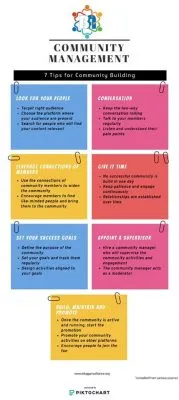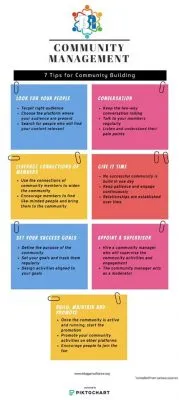Community Management – The Art of Building Communities
Blog: NASSCOM Official Blog
This is a three part blog series on community management. In part 1, we will discuss the art of building communities.
Community Management Part 1- The Art of Building Communities
COMMUNITY: SHARED IDENTITY
Community, a word that brings a feeling of belonging and togetherness, is inseparable from an individual’s heart. We, consciously or sub-consciously, always desire to belong to an entity much bigger than us. Community fulfils this desire. In a group we feel safe and confident.
People with similar interests, attitudes and motives make a community. These common characteristics are present due to common geographical area, brand preference, psychological need etc. Members of community share values, trust and loyalty with each other. People feel safe to share their thoughts in the boundaries of a community. The prime motive of any community is to bring like minded people together and create a sense of togetherness. A community is actually like an extended family.
COMMUNITY IN THE CHANGING WORLD OF TECHNOLOGY
Nothing in the world ever escaped evolution, not even a community. Traditionally, communities were widely seen in same geographical region or within same culture. But, recently a large number of communities are present on online platforms such as Facebook, Twitter, Instagram and other social media sites. The smallest example of a community is in our phone i.e. our family or friends WhatsApp groups. Internet has made possible for this communities to exist and flourish. We too are part of communities. Facebook groups are the most common examples of online communities. Members of such groups share thoughts, values as well as lifestyle recommendations with each other.
COMMUNITIES: UNSUNG HEROES OF BRAND SUCCESS
As the world goes more transparent, it is easy to intimate and difficult to sustain points of differentiation. So, the competitive strategies that will sustain for a very long duration of time is customer loyalty and love for your brand. We may consider word-of-mouth as an old age method but due to the close knit of internet, words of each consumer can reach thousand others and can affect your brand’s reputation. So, word-of-mouth, considered to be the oldest fashion of advocacy, should be taken care of. In the digital world, the word of mouth has been replaced by the word of web (WOW) Leveraging such powerful tool can bring huge benefits to brand image. Communities, thus, are very helpful to install this concept.
Swarms of sellers invade consumers mind and without any guidance or support consumers may feel overwhelmed and misled. Here comes the need of trust. When your readers or audience sense a chemistry with your content, product or service, they feel belonged. As the online platforms lack human interaction, the connection helps in driving a deeper bond between the giver and receiver. Deeper the connection, better they relate to you. This bridges the gap of communication and trust. Building connections based on commonalities develop a degree of loyalty.
DESIGNING A COMMUNITY BUILDING PLAN
- Look for your people
There are people engaging with content across various social media platforms. The first step should be to locate the audience which is interest in your content, product or services. Study the difference between the classes present on different platforms like LinkedIn vs Snapchat. Position your brand as per the expectations of your audience and choose the best platform to create the community. - First Step of Ladder – Conversation
The boon of social media brings uncountable perks. Most important of these is two-way conversation. Instant reactions and feedbacks from our readers are vital for our growth. Thus, when we communicate with members of our community it helps constructing meaningful conversation with great insights. In fact, conversation among the members can draw some helpful solutions too. Get all hears for these conversations.
There are many ways that you can kindle the conversations, such as:
– Posting a question on your latest product
– Asking opinion in the form of poll (This brings huge results)
– Going live to interact and respond in real-time. Members can join and feel a human touch of the brand
– Asking members to share their content on your platform. With the help of this User Generated Content (UGC), the community grows larger. Non-members are encouraged to join the community and share their content.
- Leverage connection of your members
LinkedIn offers this feature where you can find 2nd degree connections i.e. connections of those who are already connected to you. This helps in increasing your reach to like-minded people. The members of the community should also be encouraged to bring more members in and grow the family. People sharing brand’s interest tend to know people with similar interests too.
- Give it time
Patience, undoubtedly, is the key. If done religiously, even small interactions can help build connections. Pay continuous attention to every member’s activity. Reply and comment on relevant posts and give time for results to show.
- Set your success goals
Depending on your organisation’s goal, you can have a unique purpose to create the community. It could be increasing engagement or increasing the number of members. Focus on your goal and structure activities around it. For example, if the goal is to increase engagement you can giveaway points to more active members.
- Appoint a supervisor
Within a family of hundreds, conflicts are bound to occur. Hire a community manager who can supervise the direction in which conversations are heading to. The community manager will also be responsible to identify troublemakers and take necessary actions against him/ her to keep the community clean and maintain the harmony. This doesn’t mean that negative feedback should be avoided. Negative feedback (esp constructive criticism) is more helpful than positive ones and should be welcomed but trolls should not be entertained.
- Build, maintain and promote
As important as building a community is, promoting is no less vital. Once you are on the tracks make sure that people around you know about presence. Do cross-platform promotions. Talk about the interesting activities taking place in your community so that the non-members would realize what they are missing out. Collaborate with other communities. Perform some joint activities. Spread the word. Attract the like minded people through your activities and social media.
Some free community platforms that can be used are Facebook, Twitter, LinkedIn, YouTube, Quora, Glassdoor, Slack and many more.
SUCCESS STORIES
- PlayStation community (Sony)
The game enthusiasts are able to engage in this community which also links back to the company’s social media account on twitter and LinkedIn. Participants can give feedback, suggestions and recommendations to their fellow members as well about the brand. Members can also upload there in-game clips and engage on with other members’ game achievements.
- Being Girl (Procter & Gamble)
Formed in 2000, Being Girl serves as a digital guardian to teenage girls who can ask questions about physical, metal and societal issues. This helps the members to find solutions to the problems which they might not be able to discuss face-to-face with any adult. The company here doesn’t sell their product directly but solve customers’ problem through their expertise.
- Harley Owners Group (Harley-Davidson)
HOG, formed in 1980s, brings together people who share common lifestyle desire. Bike riding is a sport loved by many and collectively growing it with fellow enthusiasts is exciting. HOG provides such platform where members can plan rides, discuss about their favourite models and many more. HOG has more than 1 million active members.
- Lugnet (Lego)
Mainly focusing on adult members, Lugnet provides a unique forum to share one’s Lego creation and engage with others of similar interest. They are a huge community and have more than thousand entries from Lego layers.
- Apple
Apple’s online community is one of the largest communities. Mainly aimed at customer service and customer satisfaction, the community allows the users to answer the question of fellow member. In this way, customers become advocates and defend brand on a personal level. Apple also provides points to members based on their engagement.
BUILDING A COMMUNITY OF BLOGGERS AND STORYTELLERS
Bloggers Alliance organises Twitter chats, Blogger meets and other events to educate bloggers and provide opportunities to bloggers to learn from each other. A LinkedIn group has been created to build a sense of community among members.

(To be continued)
In part 2 we will discuss how to increase engagement in the community.
About the Authors
Dr Amit Nagpal is President and Community Builder at Bloggers Alliance. He is also a personal branding coach and business storyteller. To know more visit www.dramitnagpal.com and www.bloggersalliance.org .
Annie Jain is a Social Media Executive at Bloggers Alliance. She is pursuing PGDM in Marketing and Digital Marketing from NDIM and is busy unraveling the power of storytelling and digital marketing during her frree time.
The post Community Management – The Art of Building Communities appeared first on NASSCOM Community |The Official Community of Indian IT Industry.
